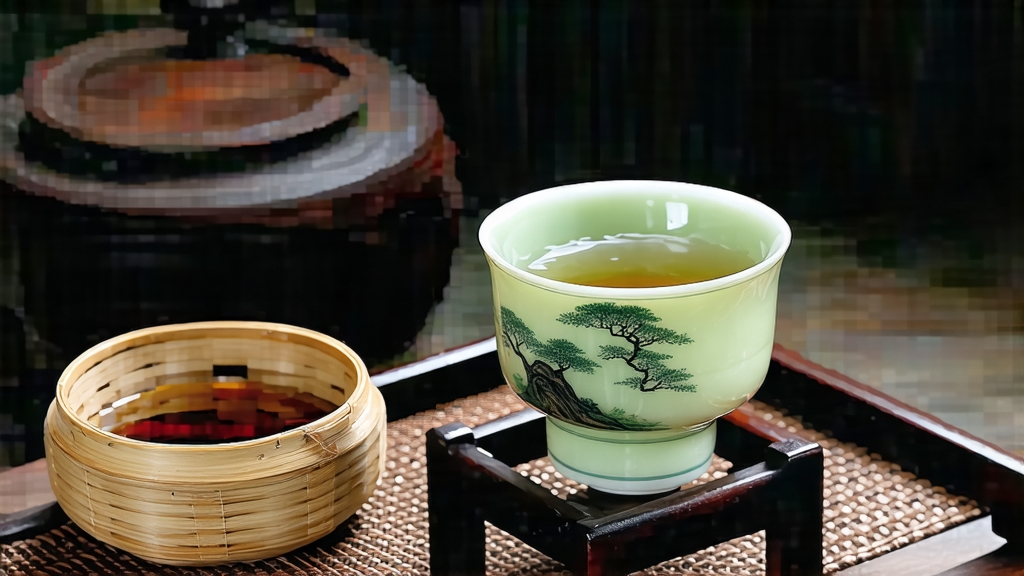
Tie Guan Yin, literally “Iron Goddess of Mercy,” is the most celebrated among China’s oolong teas and the one whose name is whispered like a prayer in every serious tea house from Taipei to Tangier. Born in the granite-studded hills of Anxi, southern Fujian, this tea is both a flavor and a feeling: orchid on the nose, cream on the palate, and a cooling yun—what Chinese tasters call “rhythmic after-tones”—that lingers like temple bells at dusk. To understand it is to step into four centuries of myth, craft, and continuous reinvention.
History: from goddess to global icon
Villagers in Anxi still tell the 18th-century tale of Wei Yin, a poor farmer who tended a dilapidated shrine to Guan Yin, the Bodhisattva of Compassion. One night the goddess appeared in a dream, directing him to a hidden cave behind his hut. There he found a single tea shoot shimmering in moonlight. He planted it in iron-rich soil, and the resulting tea was so fragrant that it financed the restoration of the shrine and lifted the entire village from poverty. Whether legend or marketing genius, the story cemented the tea’s religious aura; even today, the first infusion of a high-grade Tie Guan Yin is often poured as a libation to the household altar.
By the late Qing dynasty, Anxi merchants had carried the tea along the Min River to Xiamen port, where European traders christened it “Tea of the Iron Bodhisattva.” In the 1970s, Taiwan’s tea scientists borrowed Anxi cuttings, developed their own “Taiwan-style” Tie Guan Yin with lighter oxidation, and re-exported the style to the mainland, sparking a friendly cross-strait rivalry that still shapes market taste.
Micro-terroirs: five villages, five voices
Anxi County is a crumpled landscape of subtropical forest and terraced tea gardens between 500 m and 1,200 m elevation. Within its 3,000 km², five micro-terroirs are recognized by the national geographical indication:
- Xiping – the birthplace myth; granite soils give a bright, lilac aroma.
- Gande – higher altitude, slower growth, pronounced “yin yun” mineral finish.
- Xianghua – red-clay slopes, warmer micro-climate, rounder body reminiscent of milk custard.
- Longjuan – cooler nights, bamboo forests, greener leaf, asparagus notes.
- Futian – the experimental zone for organic conversion, producing lighter, honeyed infusions.
Each village submits its best lots to the county’s annual autumn competition, a blind-tasting spectacle judged over 200 infusions in one marathon day. The winning batch, often less than 20 kg, can fetch over US $10,000 per 500 g at auction.
Craft: the choreography of green and red
Tie Guan Yin is the textbook example of “partial oxidation,” hovering between the 8 % of green tea and the 80 % of black tea. The exact percentage—usually 25–40 %—is decided not by instruments but by the master’s nose, palms, and stopwatch.
Plucking: only the mature “zhong kai mian” leaf—three leaves and a bud—is picked around 10 a.m. when dew has evaporated but before the noon sun wilts the aromatics.
Sun-withering: leaves are spread on bamboo screens for 15–30 minutes, turned every five minutes to achieve uniform moisture loss. The goal is to reduce leaf weight by 8 % without bruising the edges.
Rocking & resting: the unique “yao qing” (rocking-green) step follows. Dozens of kilos of leaves are tumbled in a cylindrical bamboo drum rotating at 20 rpm for three minutes, then left to rest in heaps. Enzymatic oxidation ignites at the bruised edges, turning them russet while the veins stay jade. This cycle is repeated five to seven times through the night, each round shorter and gentler, like coaxing a shy child to speak.
Killing-green: at 4 a.m., when the floral bouquet peaks, the leaves are flash-heated in a 280 °C drum roaster for 90 seconds to arrest oxidation.
Rolling & compressing: hot leaves are wrapped in square cloth bundles and kneaded under a mechanical press, twisting them into the signature “dragonfly head, toad leg